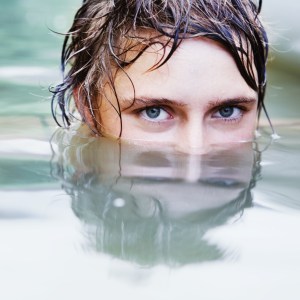Recently, I read some very tragic news items involving school pool drownings. To read what I read, click the following:
Stories such as these cause us to reflect on the best way to keep our children safe and still provide needed swimming/water safety instruction. Often, the rote answer given by aquatic professionals, risk managers, attorneys, and others is what seems to be missing—a lifeguard on duty. To quote the American Red Cross, an authoritative source, from page 7 of its current Water Safety Instructor’s Manual:
An adequate number of lifeguards should be on-duty and conducting patron surveillance during all in-water sessions.
Despite all of this, a stationed lifeguard is not always the best solution. As aquatic professionals, we need to understand this so we do not miss the point when we train others, advise pool operators and school districts, talk to the media, or look for answers in the face of tragic events.
Supervision: Not Just from the Lifeguard Chair
During instructional activities, the swimming instructor or coach, not the lifeguard, is the primary supervisor of the class. The stationed lifeguard, if present, is a secondary layer of protection—a second set of eyes watching the pool. (If you doubt this, try an experiment: The next time you are teaching a group in the water, tell the lifeguard you are leaving your class in the water for 5 minutes while you go to make a phone call. See what happens!)
In contrast, even if the lifeguard isn’t present, primary supervision of the class is still there because of the instructor. In addition to being primary, instructor supervision is also more direct, specific, and proximal to the class. This means instructors can combine supervision and class management to ensure participant safety. To that end, instructors must:
- Be prepared to make a rescue and to perform CPR/first aid
- Account for every participant at all times
- Use principles of class organization to keep participants safe, including:
- Taking a position that enables you to watch the entire class at all times
- Structure activities to minimize anticipated risks
- Introduce and enforce pool/class rules that eliminate risky behaviors
- Apply class and individual limits based on age, ability, water depth, class size, etc.
- Integrate water safety into all swimming instruction
If an instructor cannot adequately supervise and control the class at all times, the class should not be in the water until it can be divided or until additional instructors can assist.
RECOMMENDATION #1: Correct any issues with primary supervision in instructional settings before calling for a lifeguard in a chair or other secondary solutions.
Single Lifeguards: “Fish Out of Water”
In addition to being a secondary supervisor, lifeguards hired alone (i.e., outside of a properly managed swimming pool) may lack the necessary infrastructure and support system to be effective. They are a bit like “fish out of water” because of the following:
- Lifeguards should be screened and hired on the basis of meeting minimum standards required for the facility. Associations, schools districts, university recreation centers, private parties are more likely to hire individuals simply because they can produce certifications.
- Lifeguards require training, including an orientation to the job and in-service training. Single lifeguards hired by uninitiated pool operators are likely to depend on the lifeguard’s initial Lifeguarding course to give the lifeguard all the training required.
- Lifeguard training at the facility usually includes “shadowing” with an experienced lifeguard so the newbie learns how the pool area is supervised for consistency and facility-specific issues. In a single lifeguard environment, there is nobody to shadow.
- The single lifeguard probably has to work without specific written procedures defining his/her role and authority, primary responsibilities, emergency response, etc.
- Without direct supervision by a head lifeguard/aquatic supervisor, it is easy for a lifeguard to become complacent and undisciplined. They may stop suiting up, sitting in a designated place, continually scanning the pool area, etc.
Of course, these potential problems exist for the instructors as well. However, instructors have more to do in the pool area and should already be motivated to provide safe, effective instruction. It is much easier to expand their preparation to include safety, supervision in an aquatic environment, etc. than it would be to provide all the infrastructure required to manage one or more stationed lifeguards.
RECOMMENDATION #2: When hiring a single lifeguard to supplement supervision in instructional settings, make sure RECOMMENDATION #1 is in place and necessary lifeguard infrastructure is implemented and maintained.
Lifeguard Services Redefined
The issues I have addressed here (and probably budgetary concerns, etc.) have causes some states to redefine lifeguard services to include supervision by swimming instructors with proper qualifications. For example, in California, Section 116028 of the California Health and Safety Code has the following:
…”Lifeguard services” includes the supervision of the safety of participants in water-contact activities by lifeguards who are providing swimming lessons, coaching or overseeing water-contact sports, or providing water safety instructions to participants when no other persons are using the facilities unless those persons are supervised by separate lifeguard services.
Michigan, a state where one of the referenced drownings took place, has a similar law as explained in Michigan Public Pool Safety Guidelines for Schools 2007:
…Public Act 368, R 325.2198, clearly specifies when a lifeguard must be on duty and the qualifications of that lifeguard. A lifeguard must be on duty:
- At swimming pools other than spas or wading pools.
- At pools owned and operated by governments, public corporations, or a school.
- If a pool has a water surface greater than 2,400 square feet.
- If a pool has a diving board(s).
- Whenever the pool is open for use.
There must be at least 1 lifeguard for every 75 swimmers…’.
This document goes on to describe the swimming instructor/lifeguard option:
…If a supervising instructor, teacher, or coach does not meet the requirements of Rule R 325.2198, listed above, then a separate lifeguard who meets the requirements must be present.
Questions often arise about the requirements of schools to provide lifeguards. Frequently there is only one staff person on duty during class/practice. This may lead some to think that lifeguards need not be present, but usually the coach or physical education teacher is not only a qualified instructor, but also a certified lifeguard.
There must be a lifeguard on duty whenever the pool is open for use, which includes physical education class, practice, and when the pool is being used by staff or by any group, regardless of the level of swimming competency.
Can the swim instructor or coach also act as the lifeguard if he/she meets the qualifications listed above?
The answer is yes, but it is important to reiterate that if a swim instructor or coach is acting as both the instructor and lifeguard, he/she must always keep in mind that he/she is a lifeguard first and foremost.
Why Swim Instructor Lifeguard Service Makes Sense
Since swimming instructors have an inherent obligation to provide supervision, it makes sense that laws defining lifeguard service would recognize this fact, especially in situations where hiring a stationed lifeguard is impractical, irrelevant, and/or out of budget (such as within a school district).
Lifeguard services provided by swimming instructors and coaches are different than that provided by stationed lifeguards, but it can be as effective if not more so.
RECOMMENDATION #3: Recommend/require swimming instructors and coaches to have training in lifeguarding, first aid, and CPR. Make sure their protocols include readiness, adequate supervision, effective class organization, etc.
Like this:
Like Loading...
 Signs like this limit the liability of pool operators when lifeguard services are not required by state law. This is really a notice to swimmers and parents that children cannot swim without adult supervision and, in the case of this sign, that adults should not swim alone.
Signs like this limit the liability of pool operators when lifeguard services are not required by state law. This is really a notice to swimmers and parents that children cannot swim without adult supervision and, in the case of this sign, that adults should not swim alone.



